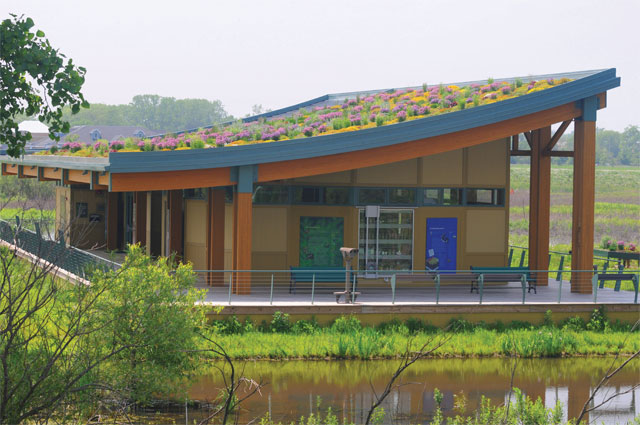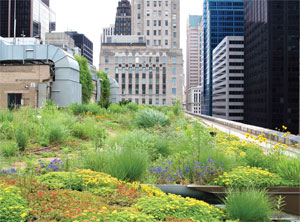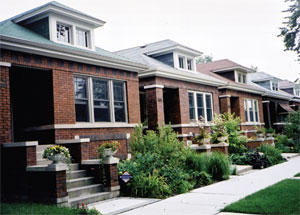Company Name
From City Beautiful to Green Metropolis
Green Construction
When Burnham and Bennett saw green, they envisioned flowering parks, treelined boulevards, and expansive forest preserves for people to enjoy. But as architects, they knew buildings also shaped the wellbeing of those who lived and worked in them. Today, many planners and architects promote wellbeing through sustainable design for buildings both large and small, whether adapting old structures or constructing new ones.
Energy consumption in buildings is the largest source of greenhouse gas emissions. Green construction methods, such as those used for Glenview's Tyner Interpretive Center, promote energy efficiency. The Center's soy-based foam insulation, solar panels, geothermal heating and cooling, and green roof have earned it the highest environmental certification.
The green roof atop Chicago's City Hall illustrates how older buildings can be adapted to bring the ecological benefits of green spaces to unexpected places. Its green roof makes use of rainfall that would otherwise go down the drain and helps insulate the building. Chicago's Green Bungalow Initiative shows how green lifestyle choices can transform an historic neighborhood, while preserving its architectural style. These homes weren't built with energy conservation in mind, but this City of Chicago pilot program demonstrates how old structures can be retrofitted with new eco-friendly technologies and materials.





